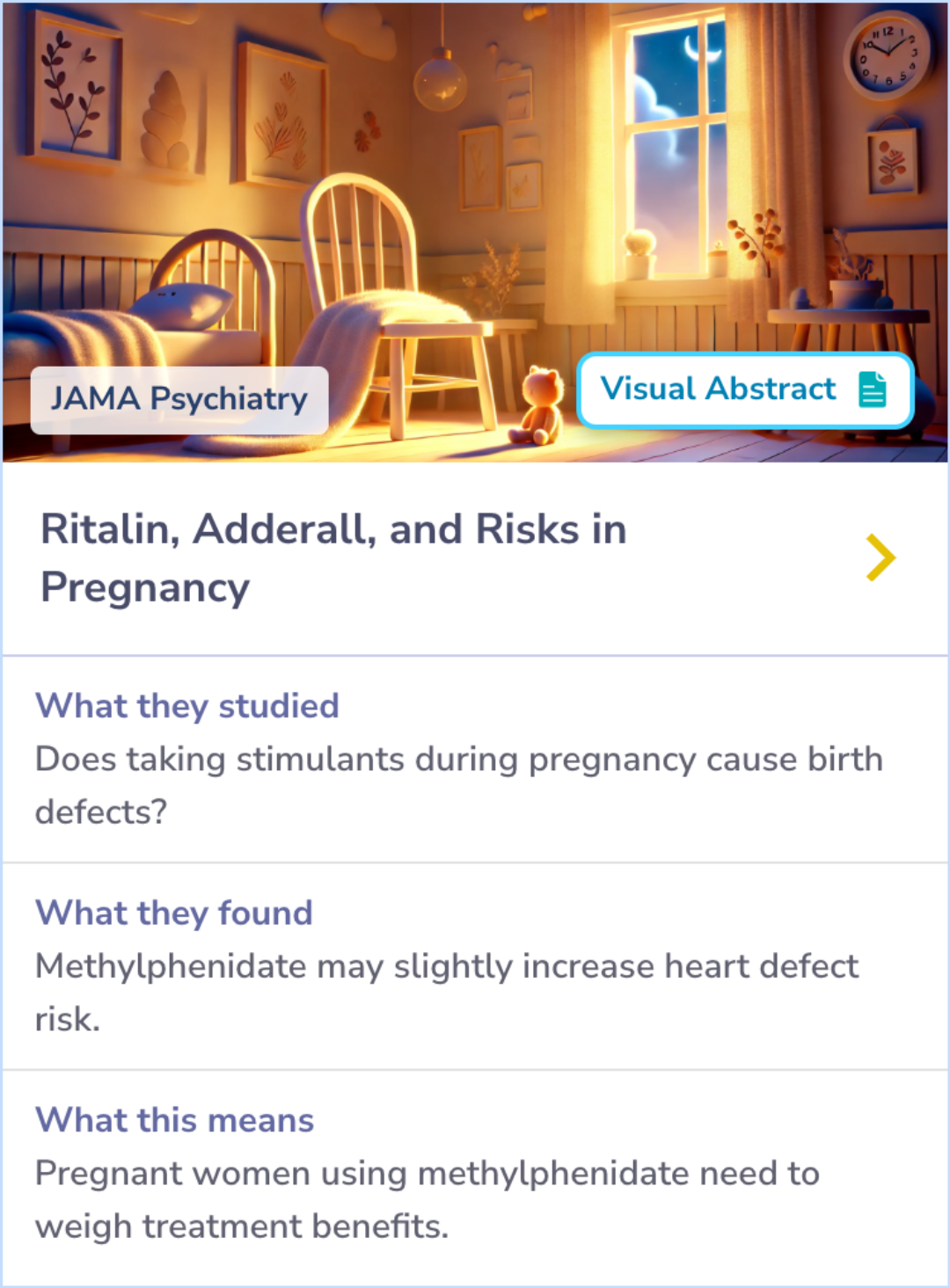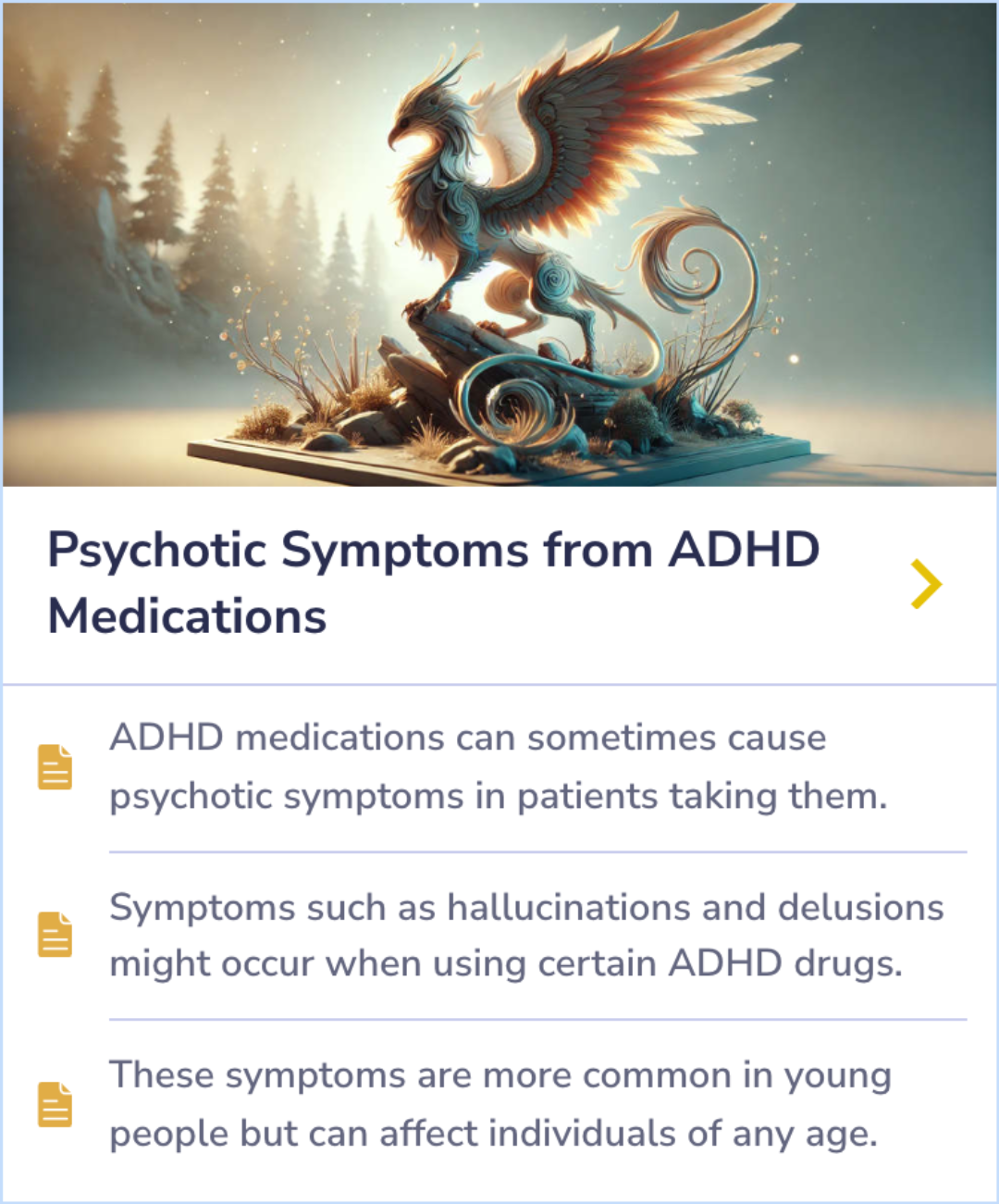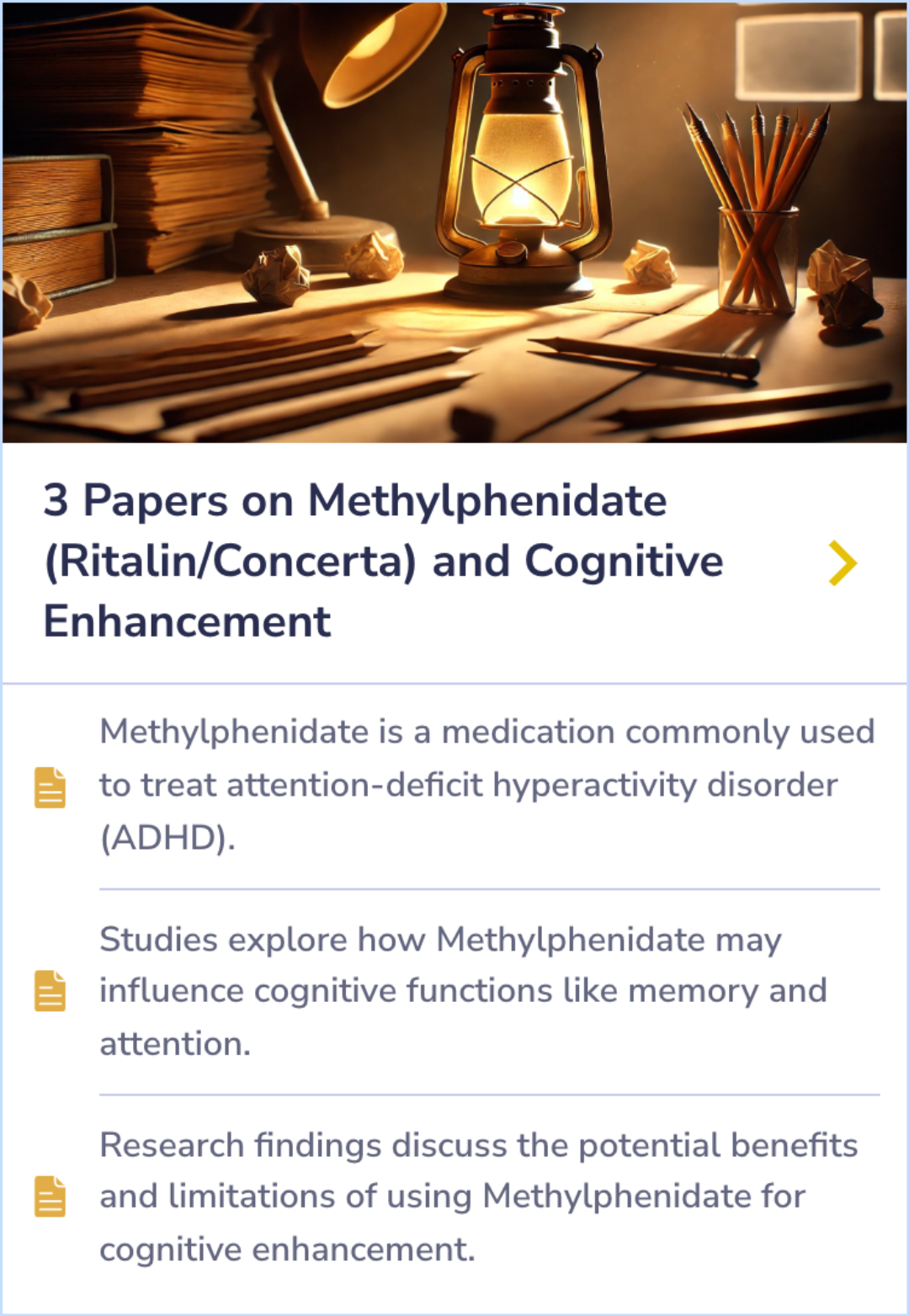Ritalin
Evidence Based Answers
What does Ritalin do to the skin?
Ritalin is associated with peripheral vasculopathy, manifesting as Raynaud's phenomenon. This condition, triggered by cold or stress, results in narrow blood vessels causing numbness and discoloration in extremities due to reduced blood flow.
Published: November 12, 2024
Click to explore a section:
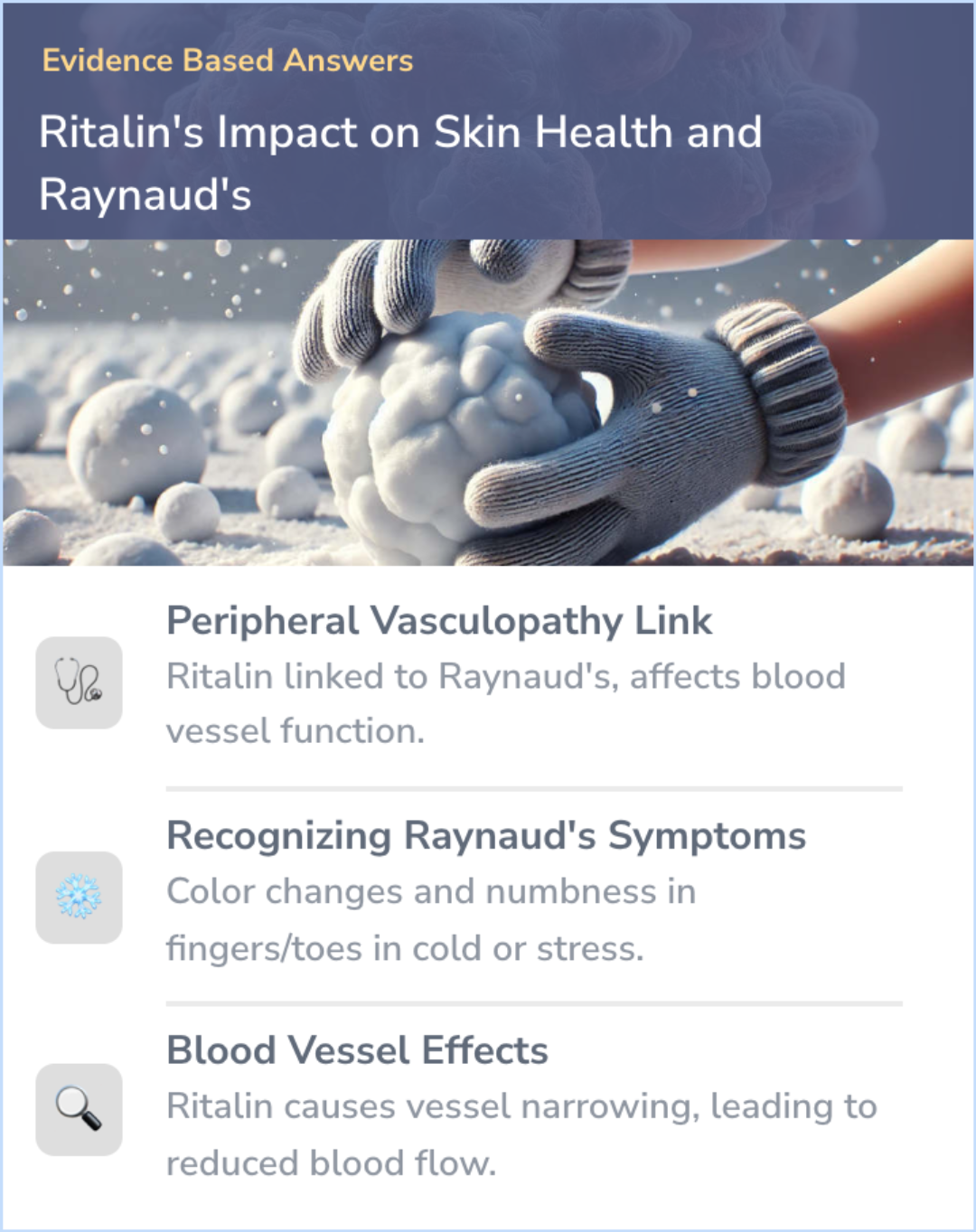
Ritalin impacts blood flow, linked to Raynaud's causing extremity discoloration and numbness.
Personal Experiences
Perspectives: Varied Experiences with Ritalin's Skin and Raynaud's Effects
In discussions on the effects of Ritalin and ADHD medications on skin and Raynaud's phenomenon, individuals report varied experiences. Some mention skin dryness and rashes as potential side effects, while others highlight improvements in skin conditions like eczema. Many also discuss how stimulants exacerbate symptoms of Raynaud's, with some offering advice on managing the condition. Some suggest other factors, like poor circulation, as contributing to these symptoms.
Overall, the impact of Ritalin on skin and Raynaud's varies significantly among individuals.
Overall, the impact of Ritalin on skin and Raynaud's varies significantly among individuals.
Reddit: u/pillmayken
Since then, I’ve noticed that my skin is a bit drier than before. However this is not necessarily a bad thing because my skin is oily, so it doesn’t really bother me... I’m not really sure but I think I might be nearing my menopause. If so, that would also explain the drier skin.Reddit: u/Disastrous_Being7746
I get cold fingers if it isn't warm outside. I've occasionally had mild numbness in the cold weather in the past, but I haven't experienced this in probably 8 years. I think my circulation has always been poor, but I'm pretty certain the Adderall is making it at least a little worse for me.Ritalin and Peripheral Vasculopathy
Ritalin, a commonly prescribed stimulant for ADHD, has been linked to peripheral vasculopathy, including Raynaud’s phenomenon. This condition affects blood vessels in the fingers and toes, causing them to become numb, discolored, and painful when blood flow is reduced. These symptoms are often triggered by exposure to cold or stress.
Careful observation for digital changes is necessary during treatment with Ritalin, as symptoms may improve when the dosage is adjusted or the medication is discontinued.
Careful observation for digital changes is necessary during treatment with Ritalin, as symptoms may improve when the dosage is adjusted or the medication is discontinued.
“
Source Quotes:
Stimulants, including Ritalin and Ritalin-SR, used to treat ADHD are associated with peripheral vasculopathy, including Raynaud’s phenomenon.
Careful observation for digital changes is necessary during treatment with ADHD stimulants.
Signs and Symptoms of Raynaud's Phenomenon
Raynaud’s phenomenon can cause noticeable changes in the color and sensation of fingers and toes. Affected areas may turn pale, blue, or red due to shifts in blood flow and may be accompanied by numbness, coolness, or pain. Cold temperatures or stress often trigger these symptoms.
Recognizing these symptoms early can help individuals manage discomfort and reduce potential complications.
Recognizing these symptoms early can help individuals manage discomfort and reduce potential complications.
“
Source Quotes:
fingers or toes may feel numb, cool, painful, and/or may change color from pale, to blue, to red.
Signs and symptoms generally improve after reduction in dose or discontinuation of drug.
How Ritalin Affects Blood Vessels
Ritalin's influence on blood vessel narrowing can lead to or worsen Raynaud’s phenomenon. This occurs as the stimulant causes the small blood vessels to constrict, leading to reduced blood flow in the extremities, resulting in color changes, pain, or numbness.
Understanding this mechanism can help with monitoring any changes in skin and circulation during Ritalin treatment.
Understanding this mechanism can help with monitoring any changes in skin and circulation during Ritalin treatment.
“
Source Quotes:
Careful observation for digital changes is necessary during treatment with ADHD stimulants.
Signs and symptoms generally improve after reduction in dose or discontinuation of drug.
Managing Skin-Related Side Effects of Ritalin
For individuals experiencing changes in skin color, temperature, or the development of digital ulcers while taking Ritalin, careful management is recommended. Adjusting or discontinuing the medication may help alleviate these issues.
Communicating any concerns to healthcare providers promptly and regular check-ins can help address these symptoms effectively.
Communicating any concerns to healthcare providers promptly and regular check-ins can help address these symptoms effectively.
“
Source Quotes:
Signs and symptoms generally improve after reduction in dose or discontinuation of drug.
Careful observation for digital changes is necessary during treatment with ADHD stimulants.
Background: What to watch out for
Fingers or toes may feel numb, cool, painful, and/or may change color from pale, to blue, to red.
Report any new numbness, pain, skin color change, or sensitivity to temperature in fingers or toes.
Report any new numbness, pain, skin color change, or sensitivity to temperature in fingers or toes.
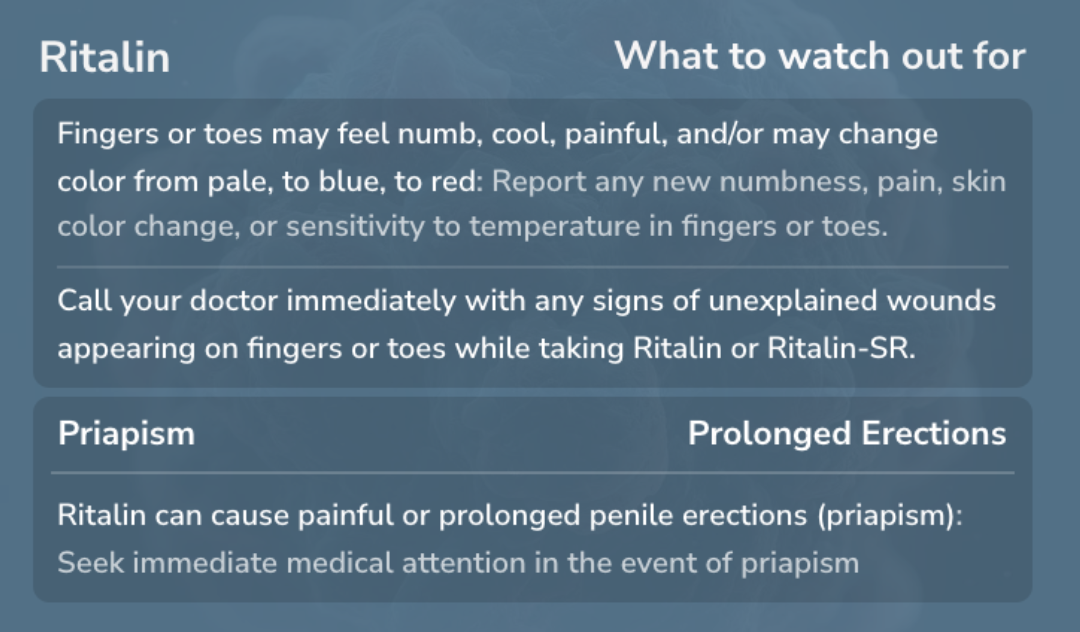
Key Takeaways
Conclusions
Ritalin, often used to treat ADHD, is linked to peripheral vasculopathy like Raynaud’s phenomenon, affecting blood flow to fingers and toes. Symptoms include numbness, discoloration, and pain, often triggered by cold or stress.
The drug can constrict blood vessels, worsening these issues. Monitoring and possibly adjusting the medication can better manage these side effects.
The drug can constrict blood vessels, worsening these issues. Monitoring and possibly adjusting the medication can better manage these side effects.
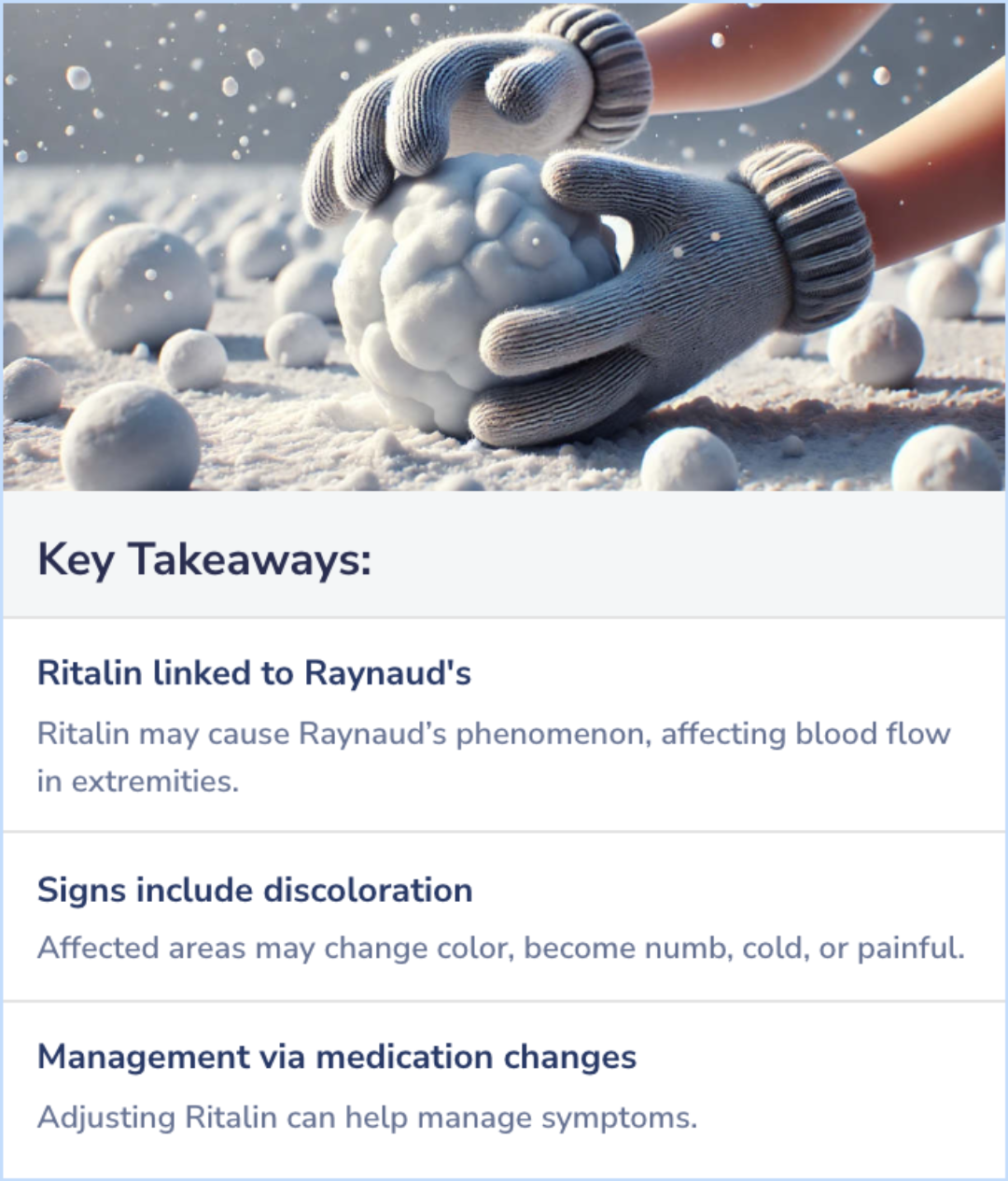
Evidence Summary
Stimulant Use During Pregnancy and Birth Defect Risks
Stimulant use during pregnancy is becoming more common, raising questions about its effects on fetal development. This study explores whether methylphenidate and amphetamines, taken early in pregnancy, are linked to birth defects.
The findings show a slight increase in heart defect risks for infants exposed to methylphenidate but not amphetamines. For major malformations overall, amphetamines show no additional risk, while methylphenidate suggests only a minimal increase.
These results provide a clearer picture of the risks associated with these medications during early pregnancy.
The findings show a slight increase in heart defect risks for infants exposed to methylphenidate but not amphetamines. For major malformations overall, amphetamines show no additional risk, while methylphenidate suggests only a minimal increase.
These results provide a clearer picture of the risks associated with these medications during early pregnancy.
Evidence Summary
Psychotic Symptoms and ADHD Medications
ADHD medications may sometimes lead to psychotic symptoms, including hallucinations or delusions, during treatment. These effects are most frequently observed in younger individuals but can occur across all age groups.
Monitoring is essential, as symptoms such as visual or auditory hallucinations and false beliefs can emerge, highlighting the need for careful oversight, particularly for young patients taking these drugs.
Monitoring is essential, as symptoms such as visual or auditory hallucinations and false beliefs can emerge, highlighting the need for careful oversight, particularly for young patients taking these drugs.
Evidence Summary
The Cognitive Effects of Methylphenidate: Boosts and Limits
Methylphenidate is used to treat ADHD, but researchers have explored its role in improving memory and attention. Studies show how it influences cognitive functions and whether it might benefit those seeking enhanced focus. These papers also highlight potential limitations, raising questions about its overall effectiveness for cognitive improvement.
The research breaks down both the benefits and constraints of using Methylphenidate for improving mental performance, providing a balanced view of its impact.
The research breaks down both the benefits and constraints of using Methylphenidate for improving mental performance, providing a balanced view of its impact.
